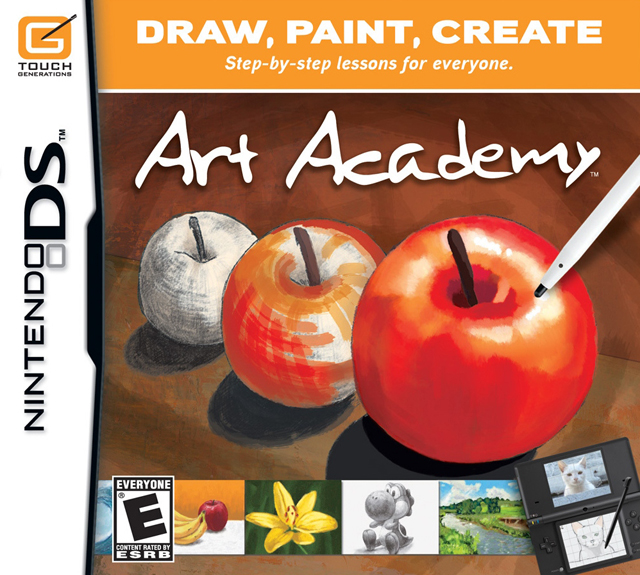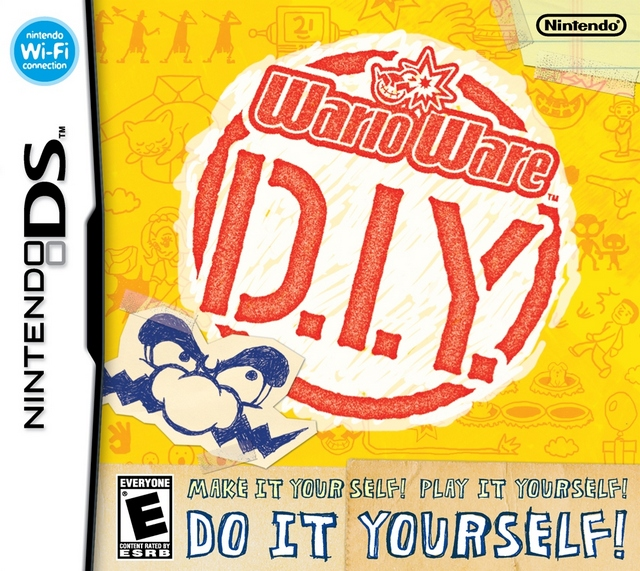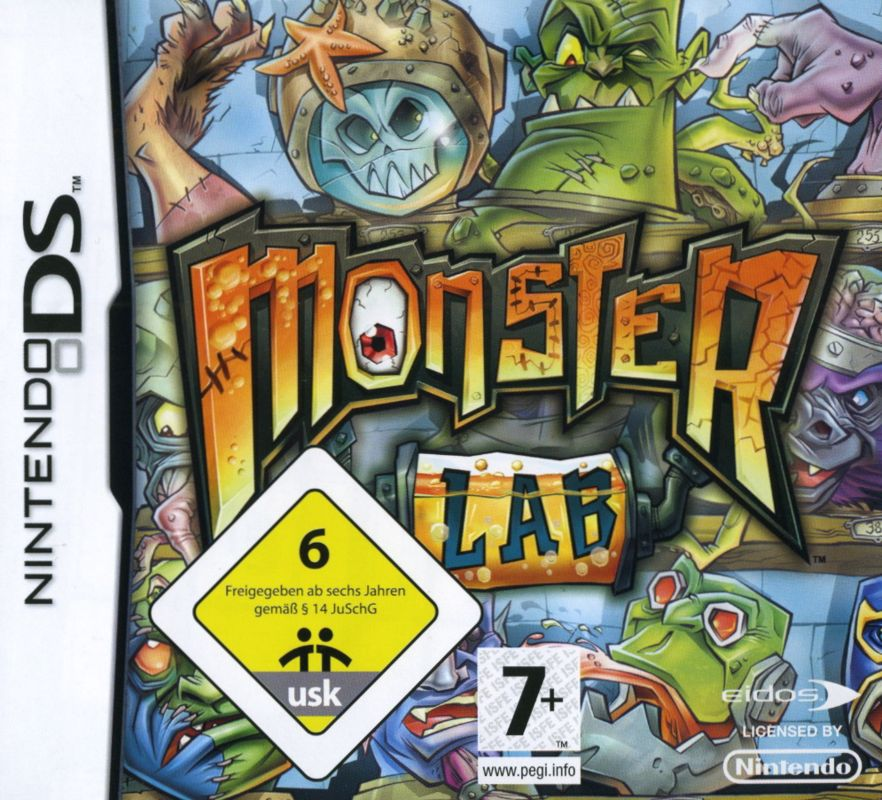The Nintendo DS library has great games. It also has a selection amazing boxarts. It would have been very easy just to choose the Nintendo-made games as part of this list, but did you know, there are games that has cover art better than Nintendo’s? Here are seven of the DS games with the best boxarts.
Nintendo DS Games with the best boxarts
7. Art Academy

Of course, this entry should be expected, as it has “Art” on its title. Art Academy may not be a conventional “game”, but it has light gameplay elements that it is still a game.
The cover art features three apples, from sketched to fully colored in bright red. Being a form of art, there is no doubt that box art looks amazing. There are also drawings below that include a huge wave, a sketch of a cat, and even Yoshi himself.
The game boasts stunning visuals, absolutely. The clarity and simplicity of each art lesson are greatly enhanced by the graphics, making them clear and easy to follow. The inclusion of a helpful character adds to the positive experience especially for those who are still learning to draw.
6. Sherlock Holmes: The Mystery of the Mummy

/The box art of Sherlock Holmes: The Mystery of the Mummy carries similar vibes to Art Academy, utilizing the same technique of resembling more of a painting than contemporary computer-generated art. While it features somewhat drab colors, it remains visually appealing despite lacking the lively hues.
In terms of gameplay, the title falls into the category of a mediocre point-and-click adventure game. Its brevity and the absence of substantial replay value create a challenging combination, especially for a game within the adventure genre.
This DS version is a port of the 2002 PC game, revolving around the renowned detective’s investigation into the death of Lord Montcalfe. The game boasts a well-constructed narrative with twists, articulate dialogue, and a compelling conclusion. Operating as a point-and-click adventure, the DS adaptation incorporates touchscreen controls for movement, observation, and object interaction, with the D-Pad serving as an alternative. The responsive control scheme is easily understandable, and while a tutorial is provided, it is deemed unnecessary due to the game’s straightforward mechanics.
5. WarioWare D.I.Y.

While the game is, honestly, not for everybody, its box art should be up everyone’s alley. It’s not the most in-your-face aesthetic box art, it is actually pretty simple yet very effective. It is merely a combination of stamp and pen art. The hand drawn on paper face of Wario is incredibly pleasing to look at.
WarioWare D.I.Y. allows gamers to fulfill the dream of creating their own micro-games, comics, and music. The focus is on micro-games, which are short and simple games that last only a few seconds. The game features a “blender” mode, where players can play micro-games in a random order until they lose four times. The gameplay is less about playing games and more about creating content for a fictional entertainment company.
The three main components are comics, records, and games. Comics are simple to create but come with limitations like a fixed size, black and white format, and a maximum of four panels. Records let players compose music with a variety of instruments, but they have limitations on tracks and notes. The meat of the game lies in creating micro-games, involving graphics, audio, and scripting. The game design is easy to learn but offers complexity for those who want to master it.
4. Monster Lab

The subject matter does not, no pun intended, matter, if the art is incredible. Take this game for example. The box art features actual terrifying monsters, but the art is magnificent. It takes talent to make monsters look this attractive without losing their fearsomeness.
The art direction is gorgeous. As for the game, it is a good game, not mind-blowing, but certainly entertaining. Monster Lab presents a unique premise where players take on the role of a new apprentice in the Mad Science Alliance, working to counter Baron Mharti’s influence over the land of Uncanny Valley. The game revolves around three main aspects: exploration, experimentation, and battles.
In terms of exploration, players navigate through various areas, completing quests, engaging in microgames, and battling monsters to gather components for creating monster parts. The storyline quests offer diversity, ranging from boss fights to tasks like coordinating missiles. Item-gathering microgames provide varied challenges too.
3. Kirby Mass Attack

It’s hard to make Kirby not look adorable. By default, they just look cuddly, puffy, and universally cutesy. Hence, several Kirby on the box art should rank it high on this list of best boxart. Looking at it closely, it is full of violence, but hey, it’s Kirby, you should have expected it. To no one’s surprise, pink and blue look good together.
As for the game, Kirby Mass Attack takes Nintendo’s beloved pink puffball on a unique adventure, breaking him into ten smaller Kirbys due to a malevolent force. The story, conveyed through still-panel cutscenes, is simple but sufficient to motivate players. The game unfolds across five diverse worlds, each with ten or more levels, offering varied environments like mysterious forests, frozen fjords, and outer space. To progress through levels, players need a specific number of Kirbys, which they gather by collecting fruit throughout the game.
Controlled solely with the DS stylus, Kirby Mass Attack provides intuitive touch screen controls. Players navigate the group of Kirbys by tapping, double-tapping for a dash, flicking for jumps, and drawing lines to guide them. The game introduces challenges such as healing rings for injured Kirbys and difficult-to-reach medals that unlock extras. The charming variety of levels includes teetering towers, tank operations, pinball stages, and haunted mansions. Boss battles showcase creativity and entertainment as well.
2. Dragon Ball: Origins

What really makes this game’s cover art good is that it features very early Dragon Ball character art. Akira Toriyama’s work is just timeless. In Dragon Ball: this was put left, right, and center.
Visually, the game impresses with graphics reminiscent of the show, showcasing well-drawn characters and environments. The quality rivals even some 128-bit console games, making it possibly the best on the handheld platform. The sound contributes to the experience, featuring memorable tunes from the show, though not all character lines are voiced. The game captures iconic sequences from the series, adding value to the overall presentation.
Technical excellence doesn’t compromise gameplay, as the stylus controls, reminiscent of “The Legend of Zelda: Phantom Hourglass,” provide a unique and engaging experience. Goku’s movements and attacks respond to touch inputs, eliminating the need for conventional controls. The game remains accessible, introducing various motions as the story progresses. While not overly challenging, the boss battles offer a level of difficulty, requiring a strategy for optimal damage. However, the game’s simplicity, particularly in non-boss encounters, may disappoint those expecting more intense battles.
1. Civilization Revolution

Sid Meier’s Civilization games are typically associated with PC gaming, making it a pleasant surprise that the game was ported to the DS, an unexpected platform. Although Civilization Revolution doesn’t belong to the mainline of the turn-based 4X legend, it still possesses the essential elements of a Civilization game.
The cover art remains consistent across all platforms where the game is available. However, this doesn’t disqualify Civilization Revolution from being at the top. The image of five civilization leaders hovering over a globe is a strong visual, and the design of these leaders is the most noteworthy aspect that elevates this cover to the best.
Criticism has been directed at Sid Meier’s Civilization Revolution for the DS from some hardcore fans. The question arises: why did they expect the DS to handle a full-fledged Civ title? It’s not just about processing power; the DS’s limited storage is a primary hindrance.
While the game doesn’t excel in graphics, it justifies itself by providing an engrossing and demanding strategy experience on a platform not renowned for its power. Surprisingly, the DS version emerges as the most addictive portable strategy game played on the platform.
